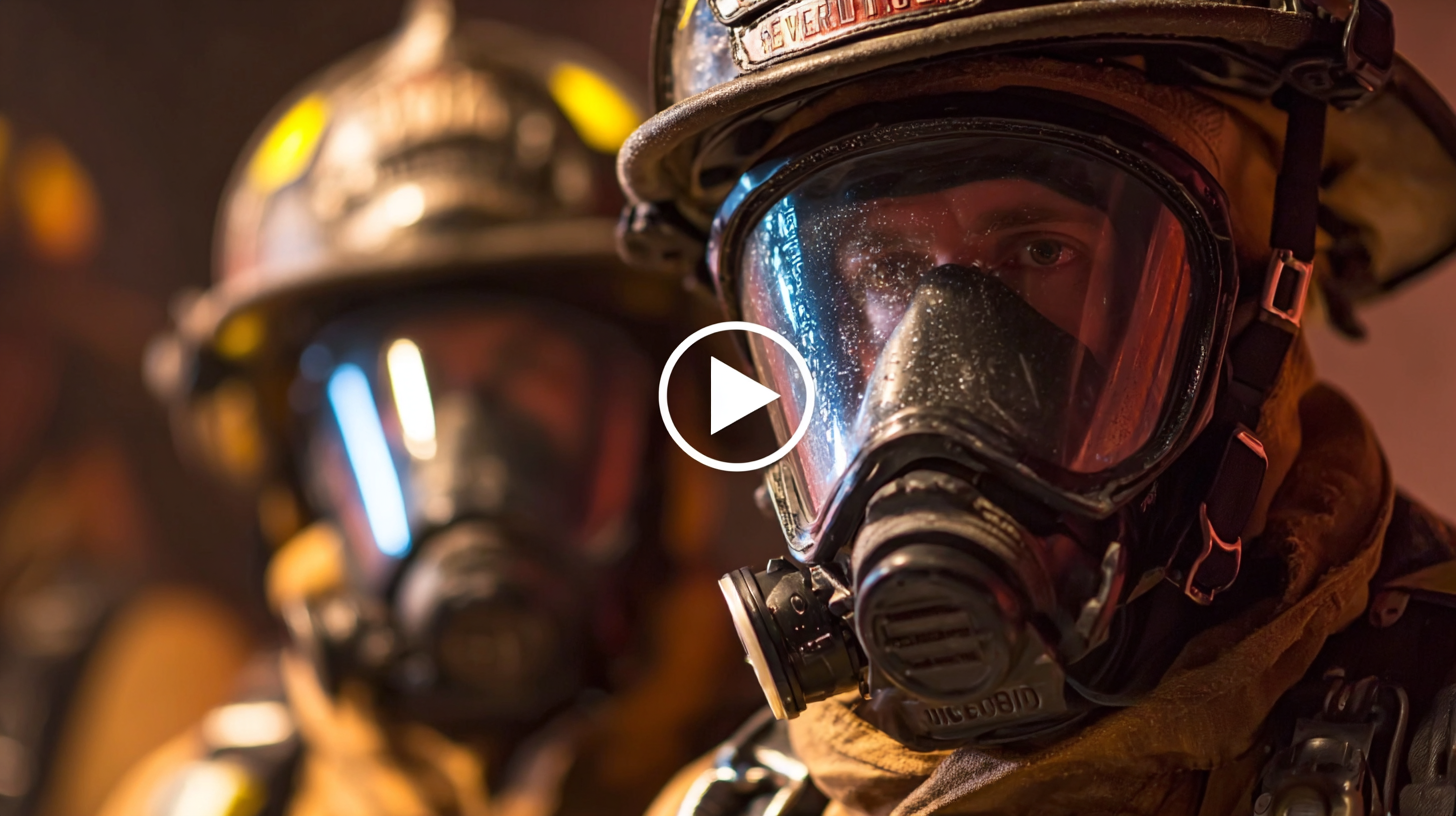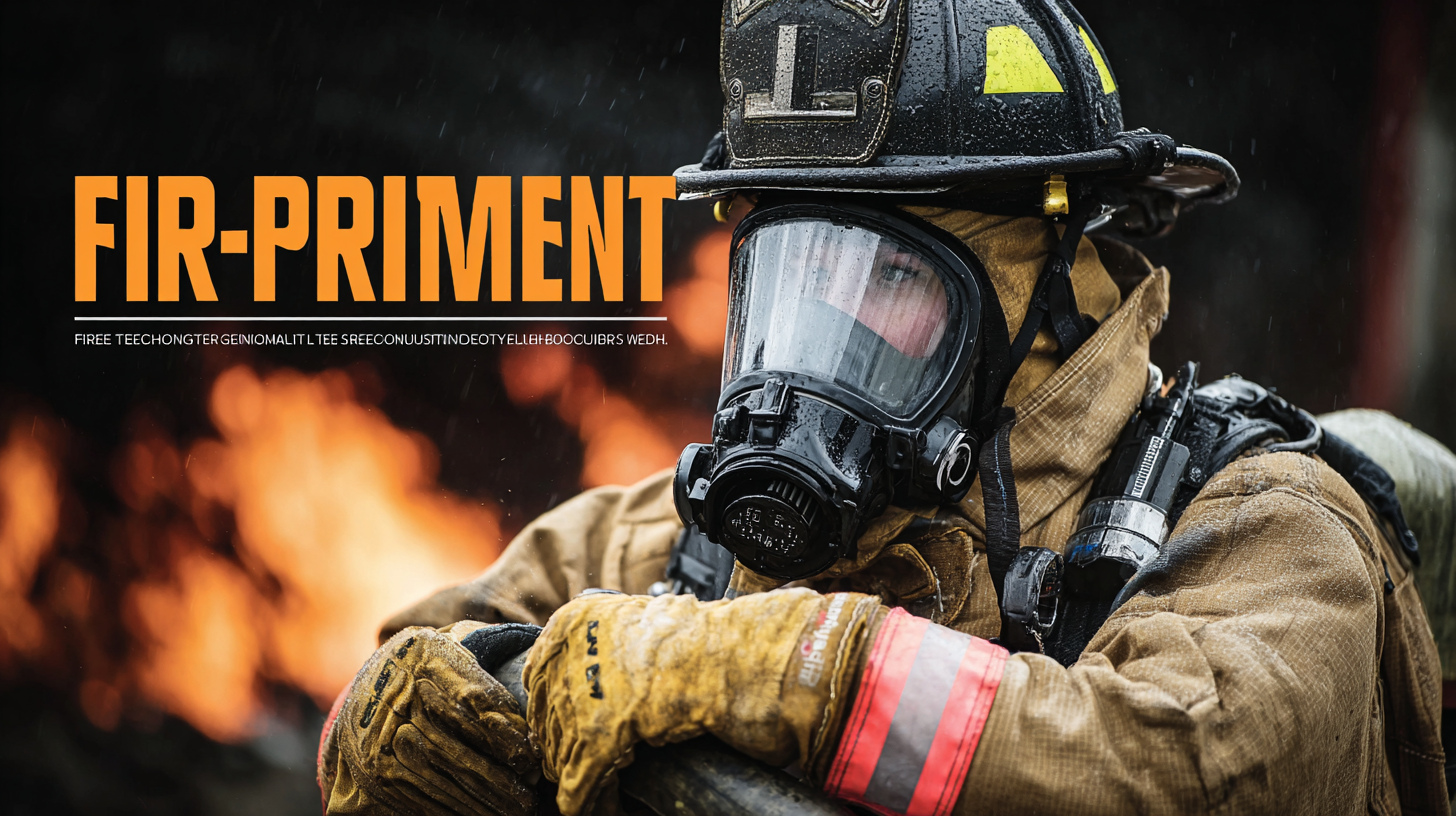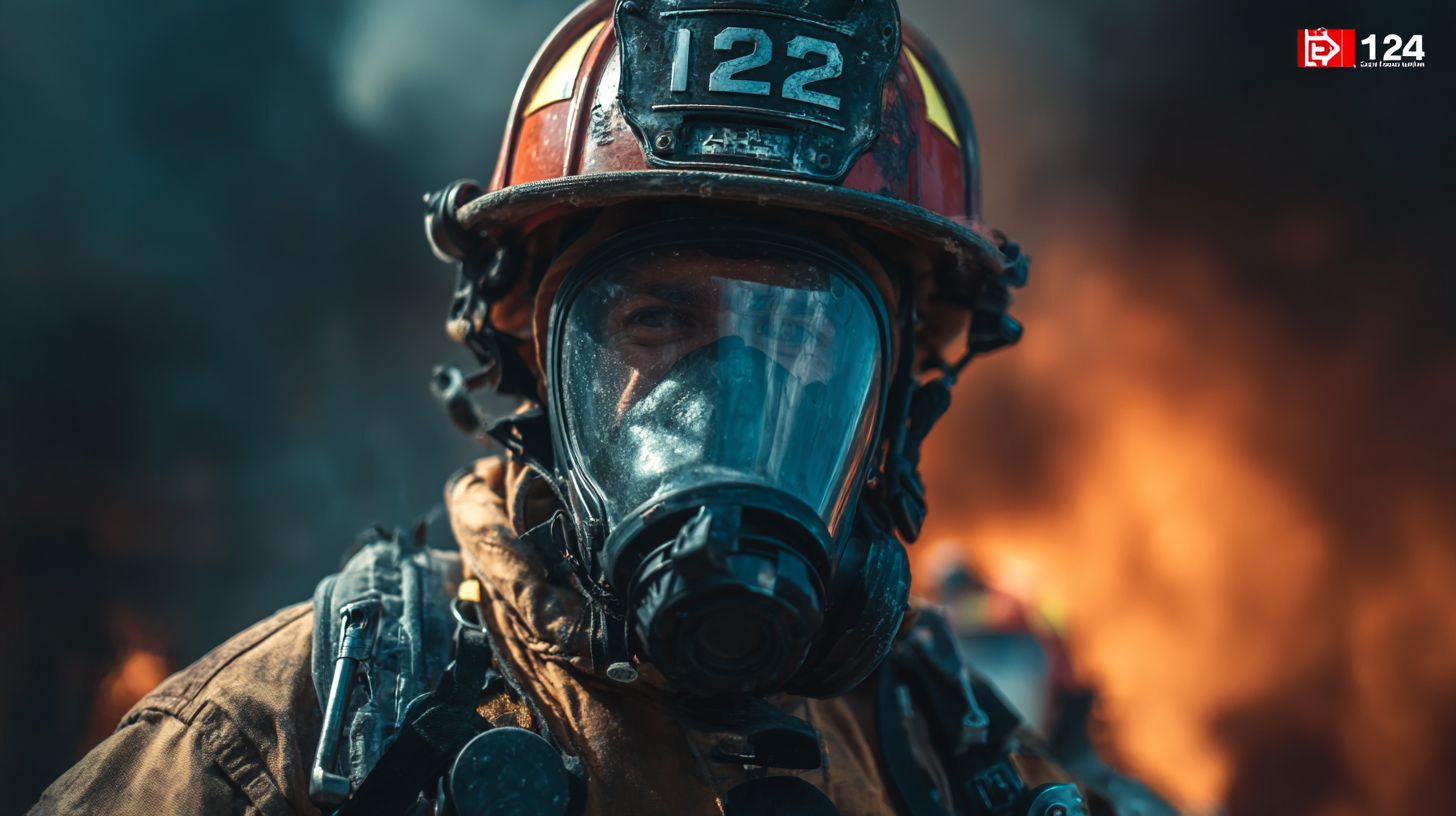2025 Trends in Firefighting Technology: How to Select the Best Equipment for Your Needs
In the rapidly evolving landscape of firefighting technology, understanding how to select the best firefighters equipment is crucial for enhancing operational effectiveness and ensuring safety. According to the National Fire Protection Association (NFPA), investments in advanced firefighting tools and gear saw a significant rise, with spending projected to reach over $5 billion by 2025. This increase underscores the importance of staying abreast of technological advancements, such as thermal imaging cameras, drone surveillance, and improved personal protective equipment (PPE), which can dramatically improve response time and firefighter safety.

As departments face new challenges, from urban wildfires to heightened urban risks, the ability to choose the right equipment is more critical than ever. This blog will explore the latest trends in firefighting technology and provide insights on how to evaluate and select the best equipment tailored to the specific needs of modern firefighting operations.
Identifying Key Features in Firefighting Equipment for Optimal Performance
When selecting firefighting equipment in 2025, understanding the key features that enhance performance is crucial. Recent industry reports indicate that 75% of firefighting professionals consider durability and reliability as top priorities when investing in new equipment. Modern materials such as advanced composites and synthetic fibers are leading the way in providing firefighters with lightweight yet sturdy gear. For instance, fire-resistant suits made from treated Nomex can withstand extreme heat while allowing for greater mobility, enabling firefighters to perform efficiently in high-pressure situations.
Furthermore, technological integrations, such as IoT-enabled devices, have proven to be game-changers. According to a 2023 survey, 68% of fire departments are now utilizing connected tools that allow real-time data transmission, aiding in decision-making processes during emergencies. Features such as GPS tracking, thermal imaging, and wearable technology not only enhance situational awareness but also significantly improve safety. As departments prepare for future challenges, prioritizing these key elements in firefighting technology will ensure they are equipped for optimal performance on the frontlines.

Evaluating Supplier Credentials: Certifications and Industry Standards to Consider
When selecting firefighting equipment in 2025, understanding supplier credentials is paramount. As revealed in a recent National Fire Protection Association (NFPA) report, nearly 30% of firefighting equipment failed to meet industry standards during routine inspections, highlighting the importance of purchasing from certified suppliers. Look for suppliers who hold certifications such as International Organization for Standardization (ISO) 9001, which ensures quality management systems, and Underwriters Laboratories (UL) certifications, which verify product safety and performance. These certifications can be indicative of a supplier’s adherence to rigorous industry standards and their commitment to producing reliable equipment.

Moreover, evaluating a supplier's familiarity with the latest technological advancements is critical. According to a 2023 survey by the Fire Protection Research Foundation, over 70% of firefighting departments reported that new technology significantly improved operational efficiency. Suppliers who engage in continuous education and are members of professional organizations like the International Association of Fire Fighters (IAFF) demonstrate their commitment to innovation and knowledge. By ensuring that your suppliers possess the right credentials and stay updated on current trends, you can make an informed decision that enhances the safety and effectiveness of your firefighting operations.
Understanding the Role of Technology in Enhancing Firefighting Efficiency
In recent years, the role of technology in firefighting has transformed significantly, enhancing the efficiency and effectiveness of fire response operations. Advanced communication systems enable instant connectivity among team members, allowing for real-time updates and coordinated efforts during emergencies. Drones, equipped with thermal imaging cameras, can survey vast areas and identify hotspots, providing invaluable information to ground crews while reducing risk to personnel. By utilizing these technological advancements, firefighters can respond quicker and more strategically to incidents.
Moreover, modern firefighting equipment incorporates innovative materials and smart technologies, improving safety and performance. For instance, fire-resistant clothing made from advanced fabrics not only offers better protection but also ensures increased comfort and mobility for firefighters in high-stress situations. Additionally, smart firefighting tools, such as auto-retracting hoses, help reduce physical strain and enhance agility. As technology continues to advance, understanding these tools and their impact on firefighting efficiency will be crucial for fire departments looking to invest in the best equipment tailored to their specific needs.
2025 Trends in Firefighting Technology: How to Select the Best Equipment for Your Needs
| Equipment Type | Key Features | Benefits | Considerations |
|---|---|---|---|
| Advanced Fire Suits | Heat resistance, Moisture-wicking | Enhanced protection, Increased comfort | Cost, Weight |
| Thermal Imaging Cameras | High-resolution imaging, Real-time data | Improved visibility in smoke, Faster victim location | Battery life, User training |
| Drones | Aerial surveillance, GPS tracking | Access hard-to-reach areas, Real-time situational awareness | Regulations, Environmental conditions |
| Portable Water Pumps | Lightweight, Efficient suction | Rapid deployment, High output | Fuel type, Maintenance |
| Firefighting Robots | Remote operation, Heat resistant | Reduced risk to personnel, Effective in hazardous environments | Cost, Technological reliability |
Assessing Cost vs. Value: Making Financially Sound Equipment Choices
When it comes to selecting firefighting equipment, understanding the balance between cost and value is crucial. According to the National Fire Protection Association (NFPA), fire departments face increasing pressures to upgrade their technologies while staying within tight budgets. This often leads to difficult decisions on whether to invest in advanced equipment or to maintain existing tools that may be less effective but more affordable. A recent report from the Fire Industry Equipment Research Organization (FIERO) emphasizes that investing in newer technologies, like thermal imaging cameras and drones, can significantly improve response times and operational efficiency, ultimately saving lives and reducing property damage.
Moreover, a study by the International Association of Fire Fighters (IAFF) indicates that the long-term cost savings of high-quality equipment can outweigh initial expenditures. For instance, modern self-contained breathing apparatus (SCBA) systems have been shown to enhance fireground safety, further decreasing the likelihood of injuries and associated costs. By carefully assessing both the upfront costs and the potential value derived from performance enhancements, fire departments can make informed decisions that align both with their operational needs and financial constraints. Effective budgeting for firefighting technology can thus pave the way for safer, more efficient emergency response services.
2025 Trends in Firefighting Technology: Cost vs. Value Analysis
Incorporating Feedback from Firefighting Professionals in Supplier Selection
Selecting the right firefighting equipment is essential for ensuring the safety and effectiveness of operations. According to a report by the National Fire Protection Association (NFPA), nearly 70% of firefighters believe that incorporating feedback from frontline professionals significantly enhances the selection process for new technology and gear. Engaging with those who use the equipment daily not only provides insights into functionality but also highlights critical areas for improvement that vendors might overlook.
In 2025, as technology continues to evolve, the integration of feedback mechanisms into supplier selection will be crucial. Reports from Firehouse Magazine show that departments that routinely consult their personnel when evaluating new tools see a 40% improvement in equipment satisfaction rates. This proactive approach ensures that firefighters have access to the best tools suited to their specific operational needs, ultimately leading to better preparedness and response times in emergencies. Emphasizing this collaborative feedback loop not only fosters innovation within supply chains but also establishes a sense of empowerment among firefighters, ensuring that they play a pivotal role in shaping the equipment that safeguards their lives and the communities they serve.
